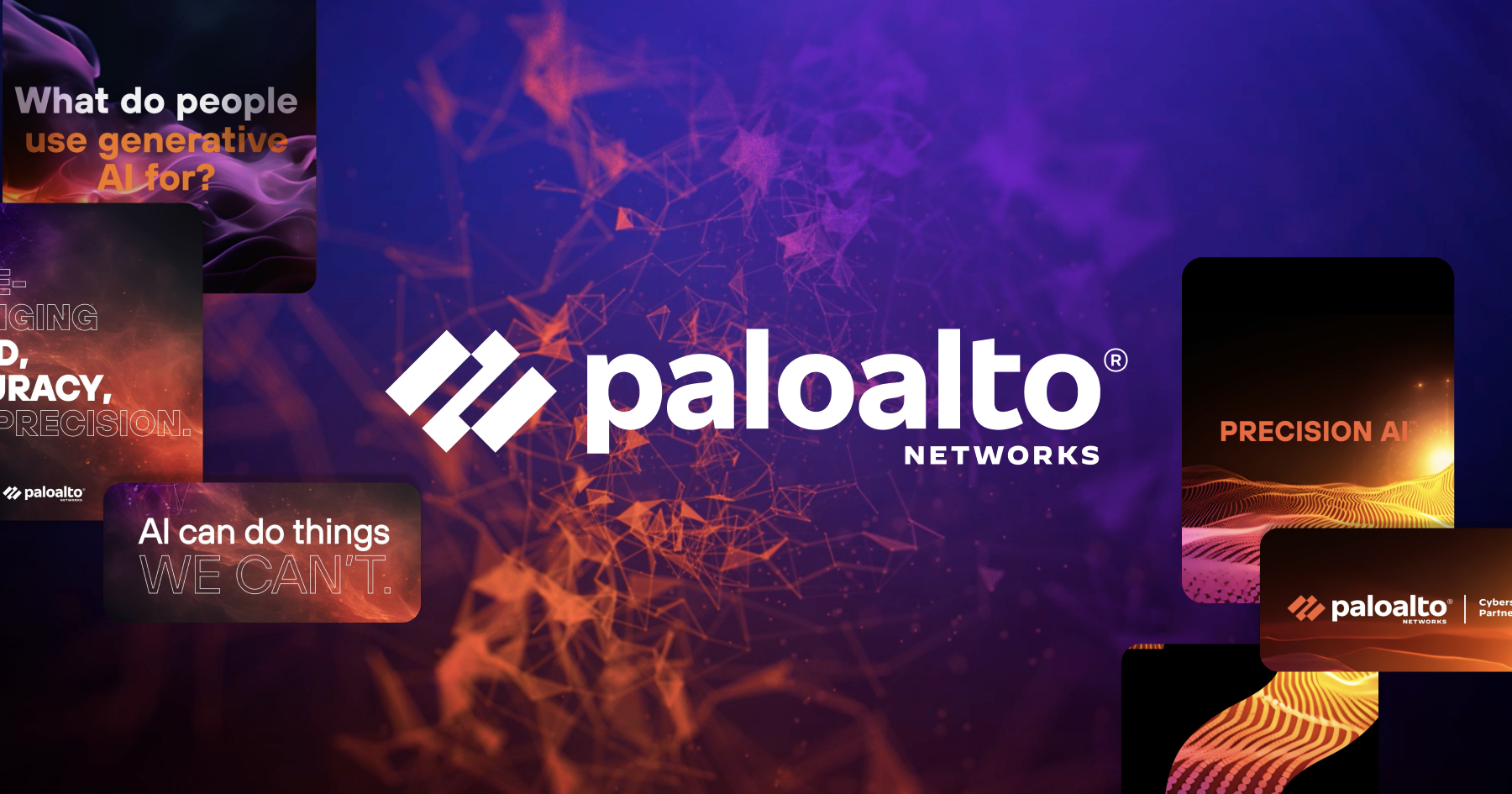The Key to Distinctive Brand Assets in Digital Marketing


Nike. Apple. Google. Starbucks. Bing. All massive brands, all memorable for their distinguished branding (Bing was a joke).
Your competitors may not be on the level of tech and retail megacorps, but if you want the edge on them, you’re going to need to stand out. Distinctive brand assets are the key here: They’re an absolutely essential part of a robust brand strategy.
What You’ll Learn
How to Make Distinctive Brand Assets
Types of Brand Assets (and Examples to Get You Thinking)
The Importance of Brand Asset Design
Types of Brand Management Software
Examples of Distinctive Brand Assets
What Are Brand Assets?
Brand assets are any marketing element that contributes to the perception of your brand. This includes more obvious elements like your logo, tagline, color palette, and fonts, but it extends to your tone and approach to engaging consumers as well.
Creating a set of well-defined brand assets is the first step to building a unique and recognizable brand. Then, they’ll need to be used consistently across all your marketing materials. This will create a cohesive, consistent brand identity that customers will remember.
How to Make Distinctive Brand Assets
There are a few key things to keep in mind when creating your brand assets.
1. Keep it simple
Whether it’s a wide color palette or a broad set of fonts, too many elements can be overwhelming and confusing for consumers. Stick to a handful of core elements that you can use across your materials. This’ll allow prospective customers to get an easy handle on your brand.
2. Make it distinct
Your brand assets should represent your business alone. This is where a dedicated creative team can help you excel; defining what makes your business different from its competitors, and making that clear through smart branding. This is what distinguishes you to consumers, and makes it easier for them to remember your brand.
3. Use high-quality visuals
First impressions matter, so make sure your visuals are professional and high-quality. Images should have a high degree of clarity (hi-res, no visible pixelation or “fogginess”), be color-correct and capable of retaining quality at any size. This applies to things like logos, photos, videos, graphics, and illustrations.
4. Be consistent.
Consistency is key to creating a cohesive brand identity. Use the same logo, colors, and fonts across all of your materials, and ensure your overall marketing approach is consistent.
With these things in mind, you can create a cohesive, recognizable brand that customers will remember.
Types of Brand Assets (and Examples to Get You Thinking)
There are two types of brand assets: physical and intangible.
Physical brand assets are tangible property that a company owns, like office buildings or factories. Intangible brand assets are nonphysical things that add value to a company, like a good reputation or customer loyalty.
Examples of Physical Brand Assets:
• Land
• Buildings
• Machinery
• Office furniture
• Vehicles
• Retail inventory
• Manufacturing equipment
• Computers and other office equipment
• Phone systems
• Product prototypes
Examples of Intangible Brand Assets:
• Goodwill
• Reputation
• Customer loyalty
• Supplier relationships
• Industry awards and recognition
• Community relations
• Government contracts
• Trademarks and patents
• Licensing agreements
• Franchise agreements
• Copyrights
• Trade secrets
The Importance of Brand Asset Design
Your company's brand assets are, in essence, revenue drivers. This is why it's critical for your company to design brand assets so that they can be easily recognized and remembered by prospective customers. Here’s what to consider when designing your own:
1. The company’s target market
2. The company’s brand personality
3. The company’s competitive landscape
4. The company’s budget
5. The company’s resources
6. The desired effect on customers
7. The legal restrictions on the use of the brand assets
8. The ease of use and implementation of the brand assets
Any successful brand is going to be built on the back of a cohesive, well-designed (and well-implemented) strategy, which means creating an iconic brand should be your goal. Everyone knows the Golden Arches and the Nike Swoosh, and it’s because of their marketing prowess as much as it is their burgers and shoes. The right strategy can help you reach the pinnacle of brand identity. Our branding services can help you get there.
Types of Brand Management Software
Managing brand assets can be complex and time-consuming, especially for large companies with multiple products and brands. To help simplify the process, companies can use several software programs to manage their assets.
1. Brand Asset Management Software
Even the most consistent brand is going to have a library’s-worth of brand assets. Brand asset management software is designed to help companies organize, store, and track their brand assets. This type of software typically includes asset libraries, version control, and workflow management features.
Examples of brand management software include Bynder, Brand24 and Frontify.
2. Digital Asset Management Software
Digital asset management software is similar to brand asset management software, but it's specifically designed for managing digital assets like images, videos, and documents. This type of software typically includes file sharing, version control, and media playback features. There can be overlap in functionality between these systems and brand asset management software, so you’ll often hear them mentioned in the same breath.
Canto, Brandfolder and Widen are common digital asset management systems.
3. Content Management Software
Most modern businesses have a lot of content on their website. Content management software is designed to help companies manage their website content. This type of software typically includes website publishing, content authoring, and content editing features. When looking for content management software, ensure it’s easy to learn and – more importantly – looks good on the visitor side. A user-friendly website spells professionalism; a clunky one screams “stay away”.
Popular content management systems are Wordpress, Drupal and Wix.
4. Marketing Asset Management Software
Marketing asset management software is designed to help companies manage their marketing assets, including images, videos, brochures, and product catalogs. This type of software typically includes asset libraries, version control, and workflow management features.
When choosing a software program to manage brand assets, you should select one compatible with your company's existing systems and processes. Give the software a test drive first, too – ensure it’s intuitive enough that employees can quickly learn to use it.
How to Leverage Brand Assets
Once you've identified your brand assets, think about how you can leverage them. Below are some tips for leveraging your brand assets:
1. Use your brand assets across all of your marketing materials. This will help create a cohesive look and feel for your business.
2. Make sure your brand aspects are used consistently. Purge any old assets and ensure all your design is using the most current elements,
3. Use your brand assets to differentiate your business from your competitors. This will assist you to stand out from the pack.
Examples of Distinctive Brand Assets
The way your business is perceived relies on a unique, cohesive brand. Let’s take a look at some brand success stories.
1. Nike’s “Swoosh”
The Nike swoosh is one of the most recognizable logos in the world. Created in 1971 by graphic designer Carolyn Davidson, it’s said to represent the wings of Nike, the Greek goddess of victory. It’s a logo meant to inspire movement, aligning it perfectly with the company’s products and ethos. It also looks like a big check mark, flattering your intelligence for having purchased a pair of Nikes.
2. Coca-Cola’s “Script Logo”
Coca-Cola’s script logo is another example of a simple and effective logo. Despite modern associations with obesity and tooth decay, it’s a logo that evokes a sense of class. It’s also a case study in not fixing what isn’t broken: The company has used the same logo for over 100 years now.
3. McDonald’s “Golden Arches”
Synonymous with the McDonald’s brand, they represent the company’s global reach. Their color choice is no accident: Yellow is universally associated with feelings of joy, and no doubt what McDonald’s hopes to communicate. They also look like a pair of bright, bent french fries. This may be incidental, though.
4. Tiffany & Co.’s “Blue Box”
The Tiffany & Co. blue box is a symbol of luxury and sophistication. It is associated with high-quality products and has been used by the company for over 100 years. It’s come to exemplify exclusivity – if you’re receiving a blue box, you’re very important to someone. Many argue whether or not the Tiffany blue box is actually blue or green. Apparently, neither of these groups are familiar with turquoise.
5. Apple’s “Apple”
Apple is known for its minimalist design aesthetic. They didn’t overthink this one: If you’re called Apple, make your logo an apple. This simplicity extends to all aspects of the company’s branding, from its product design to its retail stores. The apple itself is said to be an homage to Isaac Newton, whose scientific discoveries and theories paved the way for science and technology as we know them.
When representative of a business’ essence, branding can be a powerful tool that helps companies reach their target audiences.
Distinctive Branding Transforms Your Business
By carefully designing and managing your brand assets, you can create an iconic brand identity that differentiates your business from competitors. A well-designed branding strategy can help you build customer loyalty, increase sales and excel in your industry.
Ready to take your brand to the next level? Check out our branding services!
David is a Senior Content Marketer at Superside. A former journalist with bylines too numerous to enumerate, he brings his love of storytelling and semantics to the marketing world. Recognizing the sizable gaps in the creative-as-a-service (CaaS) sector, he jumped at the chance to fill the creative void for ambitious brands. In his off hours, he enjoys loud music, making vegan meals and being made fun of for making vegan meals. He’ll gladly talk to you about any of the above on LinkedIn.
You may also like these

An expert 7-step brand strategy framework
In an era where businesses are under pressure to produce results quickly, it’s easy to see branding as just another box to check off. However, a well-thought-out brand strategy framework isn’t just a marketing play—it’s a foundational business tool that helps teams prioritize messaging, work more efficiently and create long-term impact.During Superside’s Overcommitted Virtual Summit, branding expert and Twilio VP of Brand Adam Morgan delved into how companies can build brands that stand the test of time. Morgan, a veteran of branding initiatives at Adobe, Splunk and Twilio, provided a wealth of insights on how to approach branding with intention, align brand identity with business goals and ensure it connects deeply with customers. Dive in to learn more about the importance of purpose, audience alignment and strategic execution—all while keeping in mind the challenges of overcommitment and burnout that many creative teams face.Why branding matters more than everThere's a common misconception about branding strategies that they're just about visuals and logos. Morgan emphasized that brand strategy is about creating an emotional and strategic connection between a company and its audience.
7 top creative support solutions for teams and enterprises
There’s no denying that today’s marketing and creative teams are under more stress than ever. To deliver high-performing, top-quality assets at scale, many teams are getting fewer resources, smaller budgets and tighter deadlines.As an ever-increasing number of brands compete for audience attention, the demand for compelling content is getting higher—and essential for creative teams to meet.It’s no surprise then that in-house marketing and creative teams are turning to advanced creative support solutions to help enhance efficiency, streamline workflows and optimize production processes.From AI-powered design to cloud-based collaboration software and outsourced creative services, these solutions transform how teams work, allowing them to produce more assets faster without compromising quality.Our best advice to teams and enterprises on how to get this right? Make Superside your creative team’s creative team and free up your team to do their best work.
How to find creative partner agencies to boost 2025 strategy
Are your internal creatives battling to keep up as the demand for authentic, trustworthy content grows? For many brands, outsourcing creative makes sound financial sense. Plus, partnering with an experienced creative services team can bring fresh ideas and impressive scalability.80% of customers say that the experience a company provides is just as important as its products or services, meaning that driving great customer experiences is essential in 2025. Once again, creative partnerships pay dividends, as many creative agencies go well beyond KPIs to drive genuine cultural impact and build trust.Unlike traditional agencies, creative partner agencies also typically act as an extension of your team. Work with Superside, for example, and our talented designers will become your creative team’s creative team.






